Privacy fences are a fantastic addition to any home, offering seclusion and security for your outdoor spaces. If you’re considering installing one, understanding the costs involved is crucial. At HOW.EDU.VN, our experts provide a comprehensive breakdown of privacy fence expenses, helping you make informed decisions and secure the best possible value. This guide covers materials, labor, and other cost factors, providing insights into fence installation, backyard privacy, and boundary security, all aiming to help you create your ideal outdoor sanctuary.
1. Understanding Privacy Fence Costs: An Overview
The cost of a privacy fence can vary significantly based on several factors. On average, expect to pay between $15 and $50 per linear foot for professional installation. This range depends on the type of material chosen, the height of the fence, and labor costs in your area. The national average hovers around $26 per linear foot, but this figure can fluctuate depending on your specific needs and location.
Several elements influence the overall cost:
- Material: Wood, vinyl, chain link, and composite materials each have different price points.
- Height: Taller fences require more materials and labor.
- Labor: Installation costs can vary by region and contractor.
- Terrain: Uneven or sloped land can increase installation costs.
- Permits: Local regulations may require permits, adding to the total expense.
Understanding these factors helps you estimate the price for your privacy fence and explore options for cost savings, allowing you to balance your budget and aesthetic preferences effectively.
2. Privacy Fence Cost Per Linear Foot: A Detailed Breakdown
The linear foot cost is a primary factor in determining the overall price of your privacy fence. On average, expect to spend around $25 per linear foot for installation. Prices can range from $15 to $50 per linear foot, depending on material and other choices.
Here’s a general breakdown:
- Basic Options: Starting at $15 per linear foot, these are typically chain link or basic wood fences.
- Mid-Range Options: Ranging from $20 to $40 per linear foot, these include vinyl and more decorative wood options.
- High-End Options: Reaching $50 per linear foot or more, these are premium materials like wrought iron or custom designs.
For example, a 500-square-foot backyard might require around 70 linear feet of fencing, costing approximately $1,750 at the $25-per-foot average. A larger, 2,000-square-foot property might need 140 linear feet, costing around $3,500.
Keep in mind that these are rough estimates. The precise cost will depend on the specific materials and installation requirements for your property. Consulting with fencing professionals through HOW.EDU.VN can provide a more accurate assessment.
3. Key Factors Affecting the Cost of a Privacy Fence
Several factors can influence the cost of a privacy fence. Being aware of these variables helps you make informed decisions and manage your budget effectively.
3.1. Type of Material
The material you choose for your privacy fence significantly impacts the overall cost. Each material offers distinct advantages and disadvantages in terms of price, durability, and aesthetics.
| Material | Average Cost Per Linear Foot | Pros | Cons |
|---|---|---|---|
| Wood | $15 – $30 | Classic look, customizable, relatively affordable | Requires maintenance (staining, sealing), prone to rot and pests |
| Vinyl | $20 – $40 | Low maintenance, durable, weather-resistant | Higher initial cost than wood |
| Chain Link | $10 – $20 | Affordable, durable | Offers minimal privacy, less aesthetically pleasing |
| Composite | $30 – $60 | Durable, low maintenance, eco-friendly | Higher initial cost |
| Wrought Iron | $50 – $100+ | Elegant, durable, high security | Most expensive, requires rust prevention |
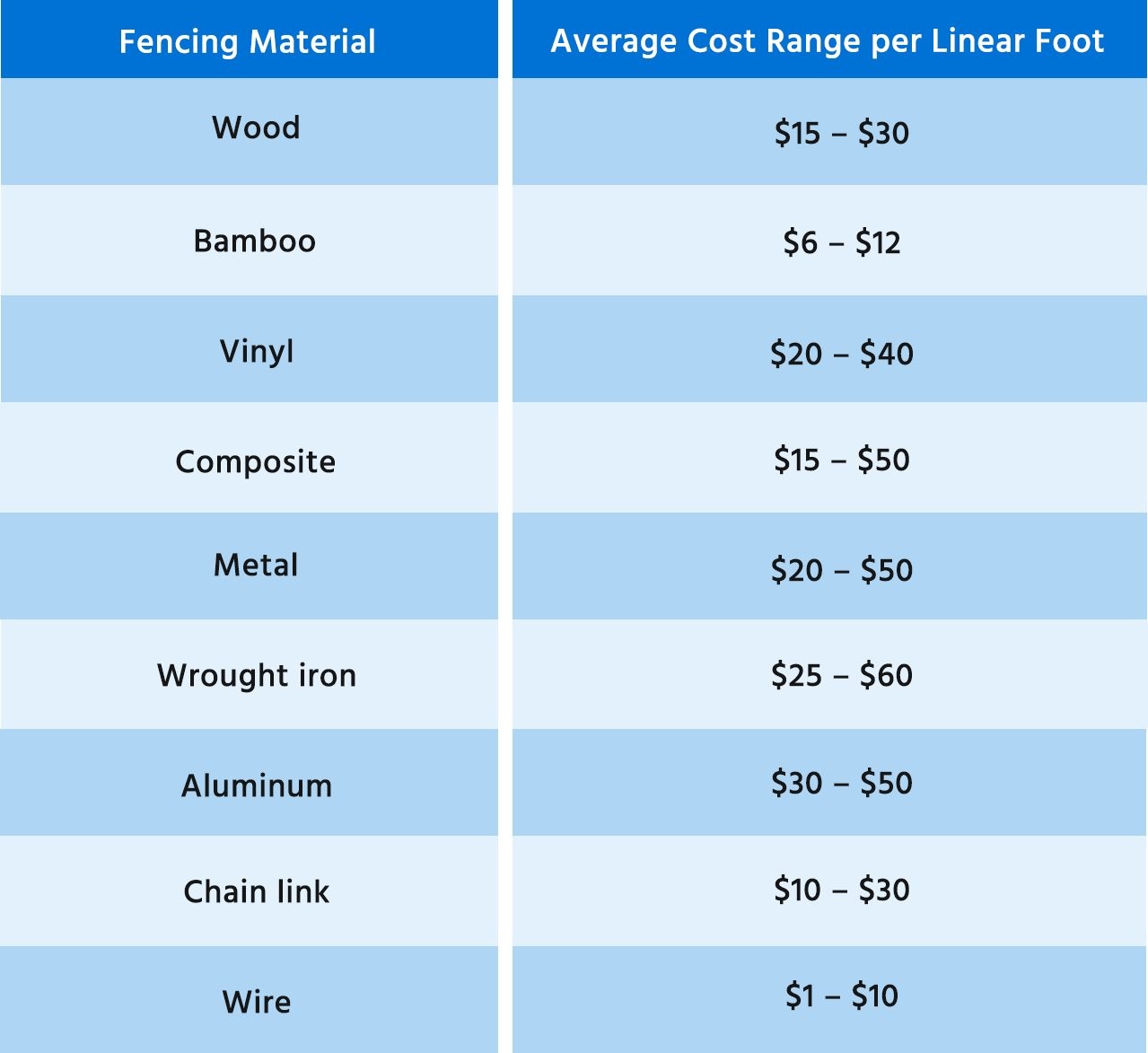
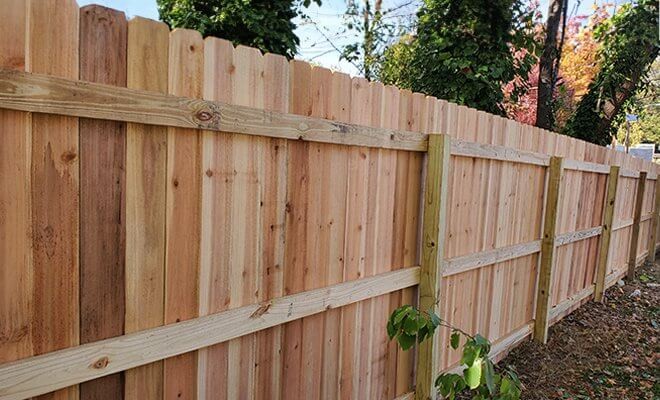
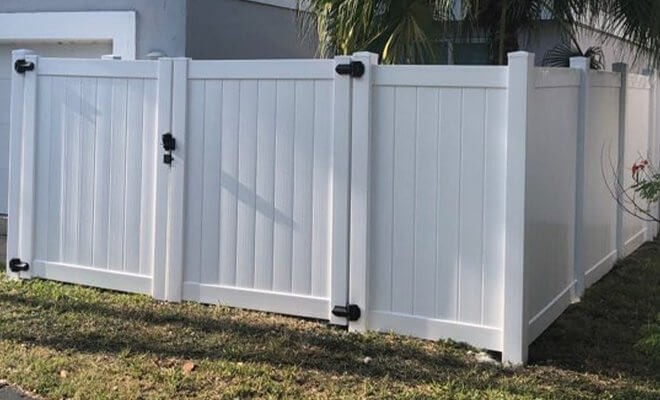
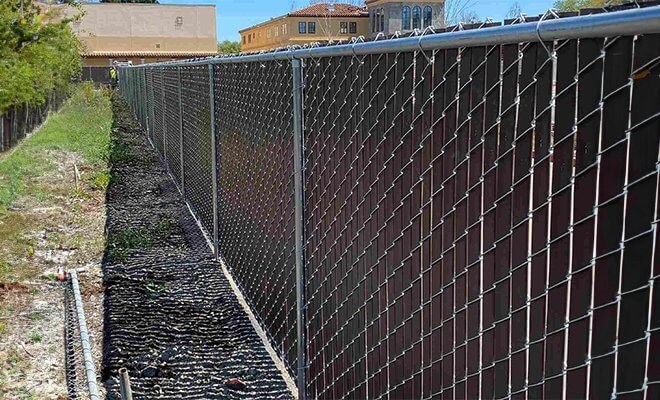
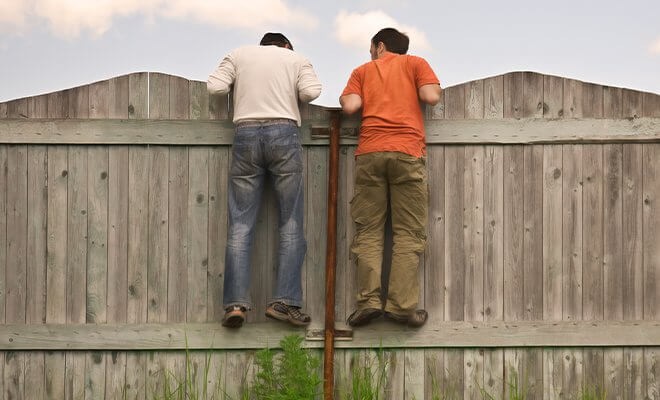


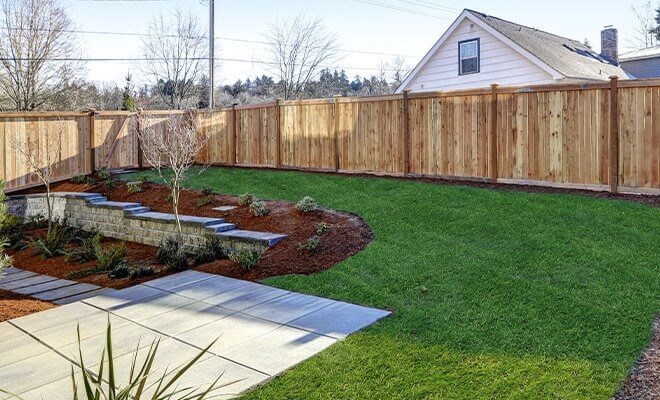
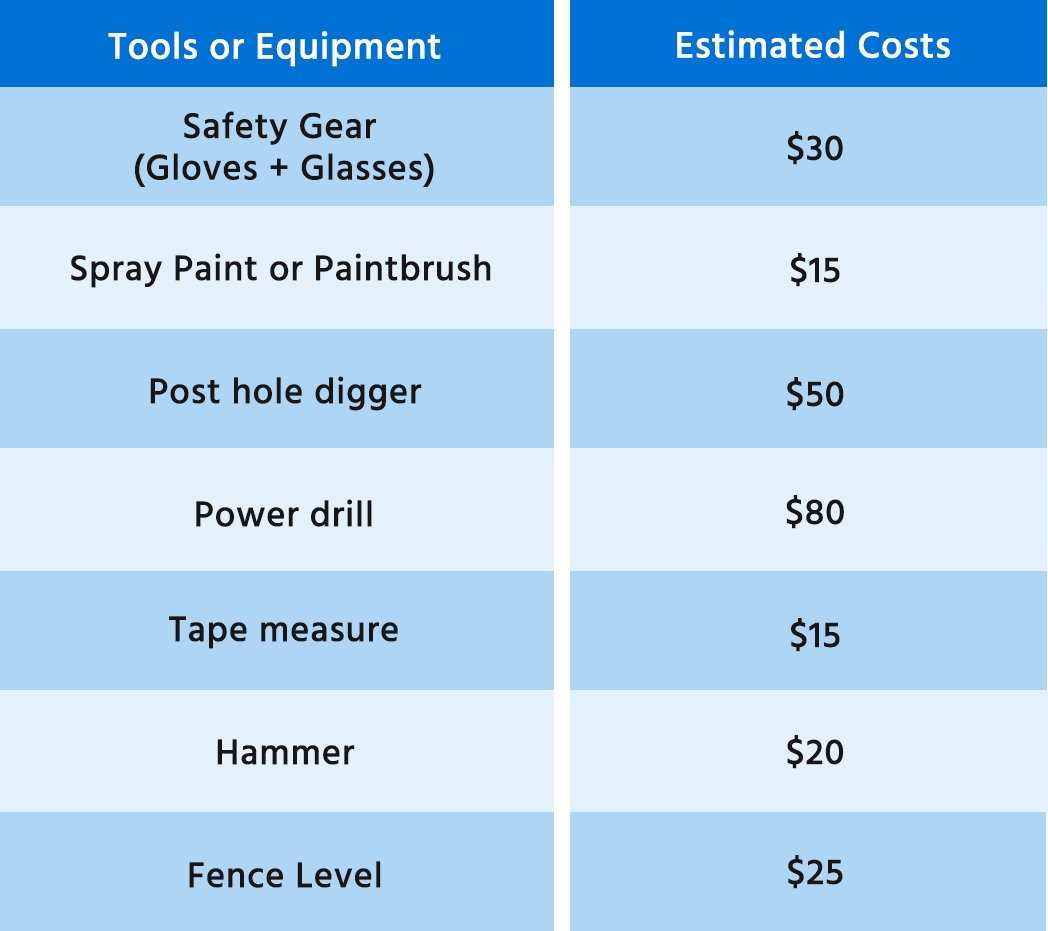
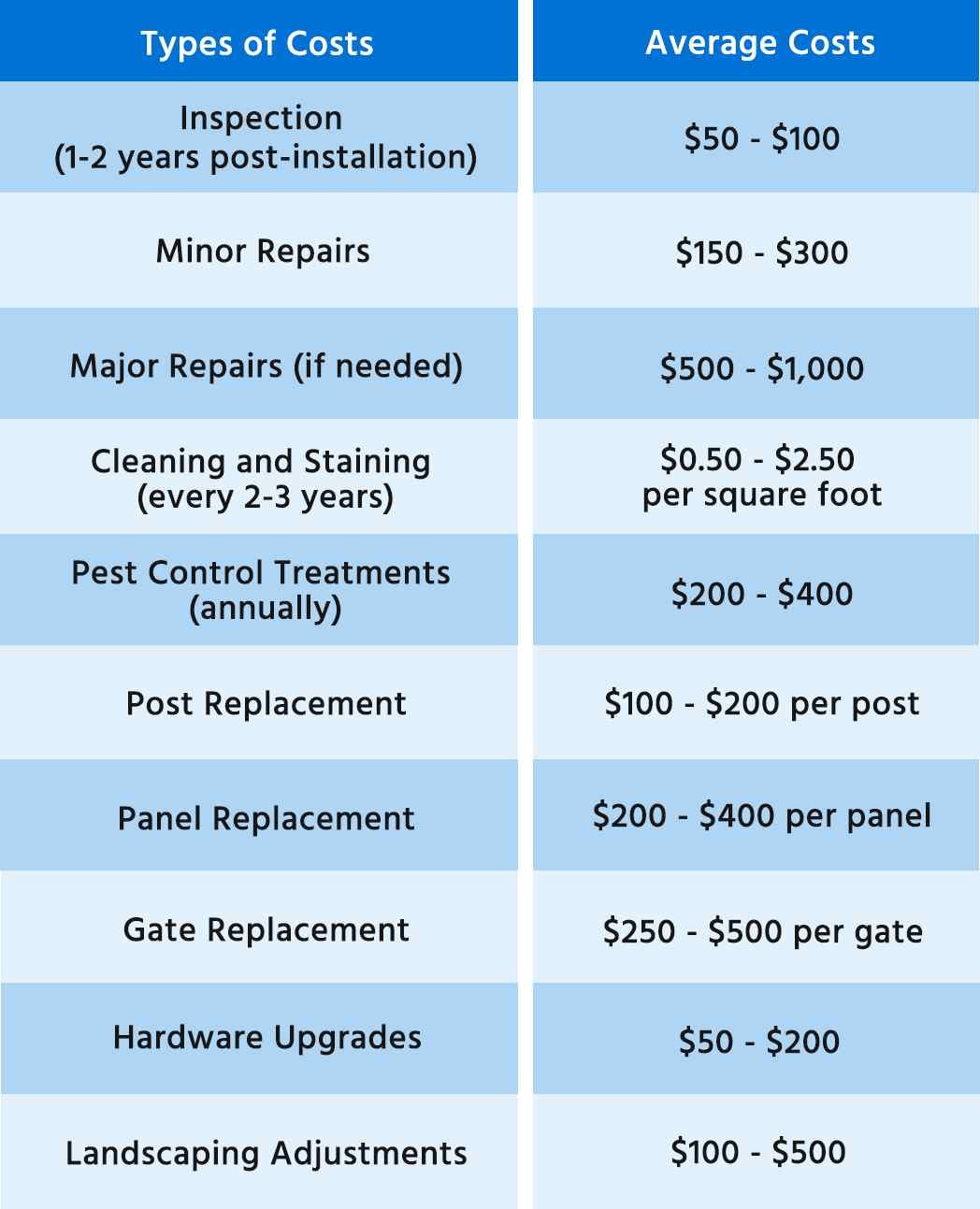
Wood:
Wood is a popular option for its natural look and versatility. Types like cedar, redwood, pine, and spruce are commonly used. Wood fences typically cost between $15 and $30 per linear foot. While aesthetically pleasing, they require regular maintenance to prevent rot and pest damage.
Vinyl:
Vinyl fences are known for their durability and low maintenance. They don’t rot, warp, or rust, making them a long-lasting option. The cost of vinyl fences ranges from $20 to $40 per linear foot. While more expensive than wood upfront, their longevity can make them a cost-effective choice over time.
Chain Link:
Chain link fences are the most affordable option, costing between $10 and $20 per linear foot. However, they offer minimal privacy. While you can add slats or fabric inserts to enhance privacy, these additions increase the overall cost.
Composite:
Composite fences blend wood fibers and recycled plastics, offering durability and low maintenance. These fences resist rot, decay, and insect damage, making them a long-lasting and eco-friendly option. Composite fences range from $30 to $60 per linear foot.
Wrought Iron:
Wrought iron fences provide a balance of security and beauty. While they don’t offer complete privacy, they can be customized with privacy screens or strategic landscaping. Wrought iron fences are the most expensive, ranging from $50 to $100 or more per linear foot.
3.2. Height
The height of your privacy fence directly impacts the amount of material needed, which influences the cost. Standard privacy fences are typically 6 feet tall.
Opting for a taller fence can increase your budget by approximately 20% to 40% per linear foot, due to the additional materials required. Check local regulations to ensure compliance with height restrictions.
3.3. Gates
Including a gate in your fence plan adds to the overall cost. Gates are more complex than standard fence panels due to their functionality and hardware.
Installing a gate for a privacy fence can cost anywhere between $150 to $1,200 per gate. This price varies based on the material, size, and complexity of the gate.
3.4. Labor Costs
Labor costs make up a substantial portion of the total expense, typically ranging from 30% to 50%. Factors that influence labor costs include:
- Removal of an Existing Fence: If an old fence needs to be removed, this adds to the labor expense.
- Complexity of the Project: Intricate designs or challenging terrain can increase labor hours.
- Hourly Rate: Labor rates generally range from $20 to $30 per hour, but can be higher for specialized work.
3.5. Terrain
The terrain of your property affects the complexity and cost of installation. Slopes or uneven surfaces require extra effort and materials to ensure the fence is properly installed and leveled.
Rocky or compacted soil can make digging fence post holes more challenging, potentially requiring specialized equipment or additional labor. Terrain grading can cost between $100 to $3,500, depending on the extent of the work needed.
4. Additional Costs to Consider
Beyond the primary costs, several additional expenses can impact your overall budget.
4.1. Permits
Local regulations and zoning requirements often necessitate permits for fence installations. Permit costs can range between $15 and $400, depending on your location and the complexity of the project. Failing to obtain the required permits can result in fines or the need to remove and reinstall the fence.
4.2. Painting or Staining
Painting or staining your privacy fence enhances its appearance and protects it from the elements. The cost varies based on the size of the fence and the type of materials used.
Expect to spend approximately $1 to $2 per square foot for painting or staining services. This upfront expense is worthwhile, as it extends the lifespan of your fence and reduces long-term maintenance.
4.3. Aesthetics and Decorative Items
Adding decorative elements can enhance the look of your privacy fence. Options include post caps and lattice panels. Post caps range from $2.5 to $20 each, depending on the style and material.
Lattice panels can increase your expenses by $15 to $60 per panel. Consider your fence’s purpose and the overall aesthetic when selecting decorative items to ensure functionality isn’t compromised.
4.4. Equipment
If you opt for a DIY fence installation, you’ll need various tools and equipment, such as a post-hole digger, level, and saw. The cost of these tools can vary, but investing in quality equipment is essential for a successful project.
Here are some average costs for equipment:
- Post-hole digger: $30 – $100
- Level: $20 – $50
- Saw: $50 – $200
- Measuring tape: $10 – $30
- Concrete mixer: $100 – $300 (or rental fees)
5. Strategies to Save on Fence Installation Costs
Installing a privacy fence is a significant investment, but there are ways to mitigate costs without compromising quality.
5.1. Choosing Cost-Effective Materials
Selecting affordable fencing materials is a straightforward way to save money. Chain-link fences are generally less expensive than wood or vinyl. If you prefer the look of wood, consider using treated pine, which is more affordable than cedar or redwood.
5.2. Timing Purchases for Sales or Off-Season
Time your purchases to coincide with sales or during the off-season. Many home improvement stores offer discounts during the fall and winter months when demand for outdoor projects typically wanes. Planning your fence installation during these times can lead to lower material costs.
5.3. Comparing Quotes and Negotiating with Contractors
Obtain multiple estimates from different companies to ensure you’re getting a competitive rate. Don’t hesitate to discuss pricing options and ask if there’s any room for negotiation. Some contractors may also offer discounts for larger projects or for referrals, so it’s worth inquiring about any potential savings.
6. Post-Installation and Maintenance Costs
Understanding post-installation and maintenance costs is crucial for long-term budgeting. These costs can vary based on the materials used, the size of the fence, and local labor rates. Regular maintenance can help extend the life of your fence, potentially saving you money in the long run.
Here’s a breakdown of typical post-installation costs:
- Cleaning: $50 – $200 per year
- Repairs (wood): $100 – $500 per year
- Repairs (vinyl/composite): $50 – $300 per year
- Staining/Sealing (wood): $200 – $800 every 3-5 years
7. Popular Types of Privacy Fencing
7.1. Wrought Iron Privacy Fence
Wrought iron fences offer an exceptional balance of security and beauty. Their outstanding durability and strength ensure long-lasting protection for your property, while their timeless design adds elegance and sophistication to any landscape.
One of the key advantages of a wrought iron privacy fence is its potential for customization. These fences can be crafted with intricate designs and patterns that reflect your personal style and complement the architectural elements of your home.
7.2. Lattice Privacy Fence
Lattice fences have become increasingly popular. They offer an appealing blend of aesthetics and functionality, allowing homeowners to maintain some visibility while still enjoying a sense of seclusion. These fences are commonly constructed using wood, vinyl, or metal materials, with each offering its own unique benefits.
One advantage of lattice fences is their versatility in serving both decorative and practical purposes. In addition to providing privacy, these fences can also act as a support system for climbing plants such as ivy or roses. This natural element adds beauty and charm to the overall design of the fence while enhancing the surrounding landscape.
7.3. Vinyl Picket Fence
Vinyl picket fences are a popular choice thanks to their timeless and appealing appearance. These fences offer a classic charm that can enhance the overall aesthetics of any property. They are commonly made from high-quality PVC vinyl, which ensures their durability and longevity.
One of the major advantages of vinyl picket fences is their low-maintenance nature. Unlike wooden fences that require regular staining or painting, vinyl picket fences only need occasional cleaning with soap and water to keep them looking pristine.
7.4. Composite Fences
Composite fences are an innovative solution that blends the natural beauty of wood with the practicality of plastic. These fences are created by combining wood fibers and recycled plastics, resulting in a durable and long-lasting product. The addition of plastic in the composite material enhances its resistance to rot, decay, and insect damage, ensuring that your fence remains intact and aesthetically pleasing for years to come.
One of the remarkable features is the wide range of colors and styles available for composite fences. From classic earth tones to contemporary shades, there is a color option to match any outdoor landscape or architectural style.
8. Frequently Asked Questions
8.1. Is it better to DIY a privacy fence or hire a professional?
Whether to DIY a privacy fence or hire a professional depends on your skills, available time, and budget. DIY can save money, but it requires significant effort and know-how in construction. Professionals ensure a high-quality, code-compliant installation. If unsure, consult an expert for advice or get quotes from contractors to make an informed decision.
8.2. How do I calculate the amount of fencing I need?
To calculate the amount of fencing needed, measure the perimeter of your property and account for gates. Divide by the panel width or post spacing to determine the number of panels or posts required. Fence panels usually come in standard sizes, which helps estimate quantities. Always round up to ensure you have enough materials.
8.3. Is it cheaper to build a privacy fence or buy panels?
Building a privacy fence from scratch can be more cost-effective in terms of materials, especially if you choose more affordable wood options. However, the labor costs can be significant if you are not doing it yourself. On the other hand, buying pre-made panels might be slightly more expensive upfront for the materials, but they can significantly reduce the installation time and labor costs, potentially making it the cheaper option.
8.4. How do I find the regulations around fence height in my area?
To find fence height regulations in your area, consult your local zoning or building department. They can provide guidelines on maximum fence heights and setback requirements. Regulations may vary, so it’s essential to verify the rules before installation to avoid potential legal issues or costly modifications.
8.5. What are the benefits of using composite materials for a privacy fence?
Composite materials offer enhanced durability, low maintenance, and resistance to rot, decay, and insect damage, ensuring long-lasting performance and reducing the need for frequent repairs or replacements.
8.6. How can I enhance the privacy of a chain-link fence?
You can enhance the privacy of a chain-link fence by adding slats or fabric inserts, planting shrubs or vines along the fence line, or installing privacy screens.
8.7. What are the key considerations when choosing a gate for my privacy fence?
When choosing a gate, consider the material, size, hardware, locking mechanism, and how it complements the overall design and functionality of your fence.
8.8. How often should I stain or seal a wooden privacy fence?
You should stain or seal a wooden privacy fence every 3-5 years, depending on the climate and the type of wood used. Regular maintenance helps protect the wood from moisture, UV rays, and pests.
8.9. What are some eco-friendly options for privacy fencing?
Eco-friendly options include using reclaimed wood, bamboo, or composite materials made from recycled plastics and wood fibers. These options reduce deforestation and promote recycling initiatives.
8.10. How can I ensure my privacy fence complies with HOA regulations?
Review your HOA guidelines before starting any fence project, and consult with your HOA representative to ensure your plans meet their requirements. This can help you avoid potential fines or the need to modify your fence.
9. How HOW.EDU.VN Can Help You
Planning a privacy fence project can be overwhelming, but HOW.EDU.VN is here to simplify the process. Our team of expert consultants can provide personalized advice and guidance, helping you navigate the complexities of fence installation.
Here’s how we can assist you:
- Expert Consultations: Connect with experienced professionals who understand local regulations and best practices.
- Cost Estimation: Receive accurate, data-driven cost estimates tailored to your specific project needs.
- Contractor Referrals: Get connected with vetted and reliable contractors in your area.
- Project Planning: Develop a detailed project plan that ensures a smooth and successful installation.
Don’t let the complexities of fence installation deter you from enhancing your property’s privacy and security. Contact HOW.EDU.VN today for expert guidance and support.
Address: 456 Expertise Plaza, Consult City, CA 90210, United States
Whatsapp: +1 (310) 555-1212
Website: HOW.EDU.VN
Ready to enhance your property with a beautiful and functional privacy fence? Contact how.edu.vn today for expert advice and personalized solutions. Our team of experienced consultants is here to guide you through every step of the process, from initial planning to final installation. Don’t wait—achieve the privacy and security you deserve with the help of our trusted professionals.
